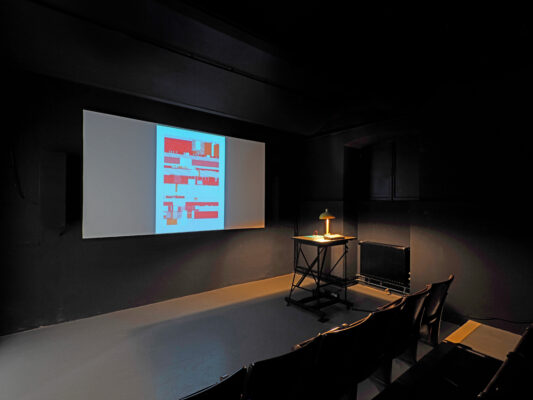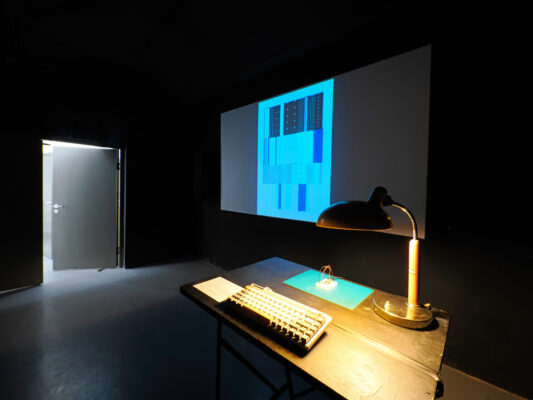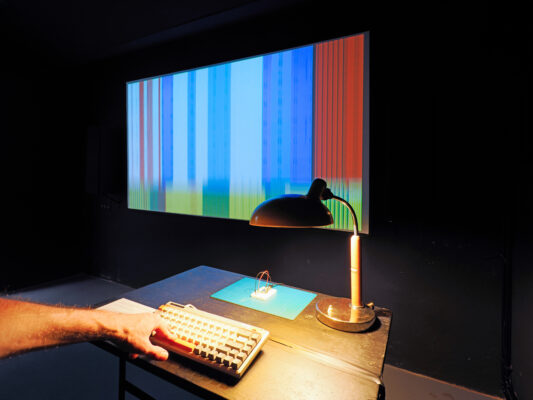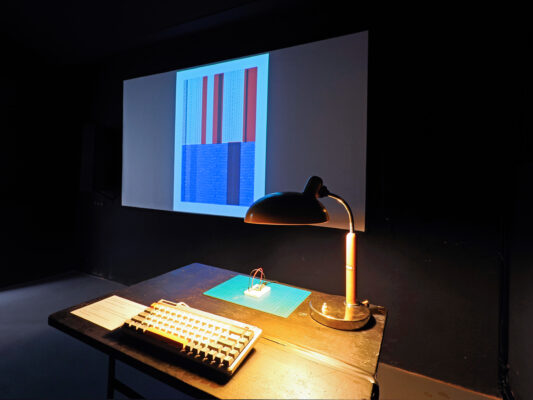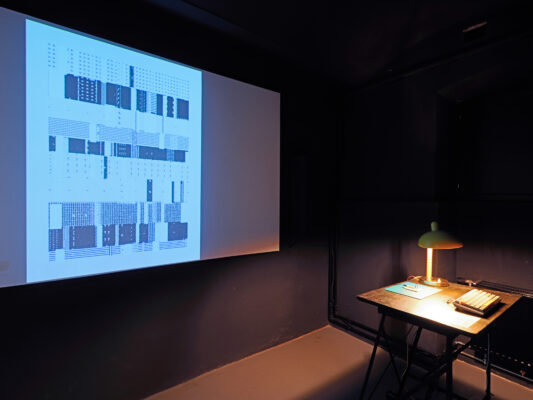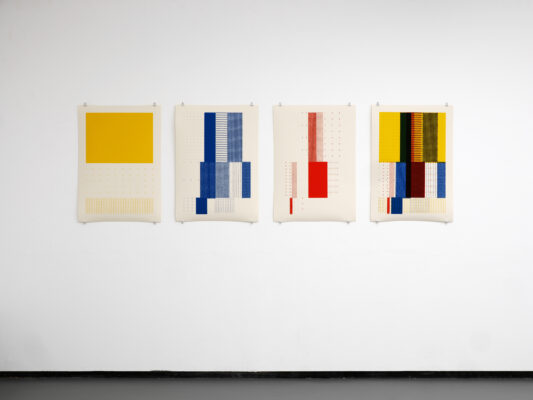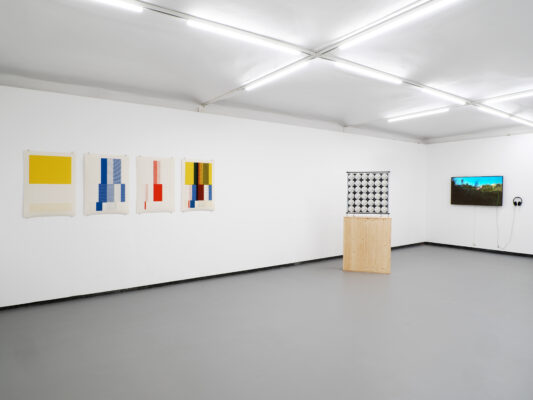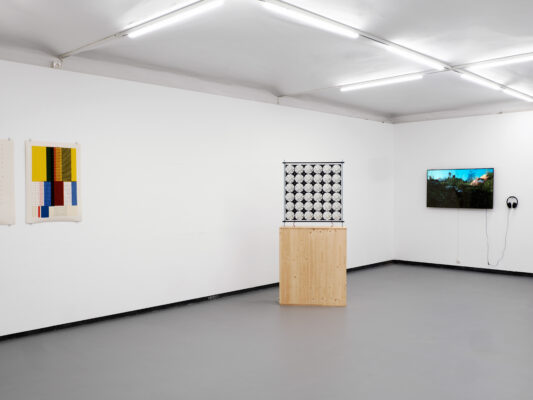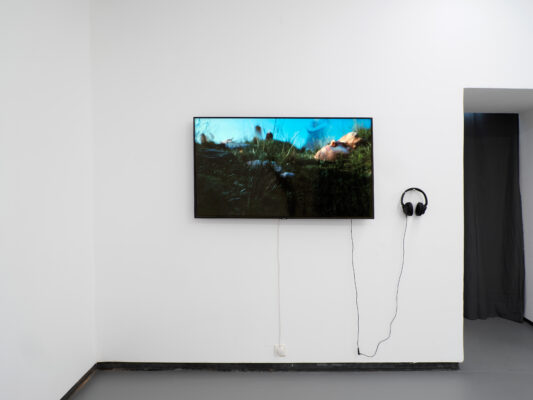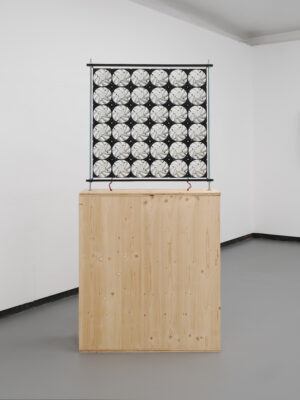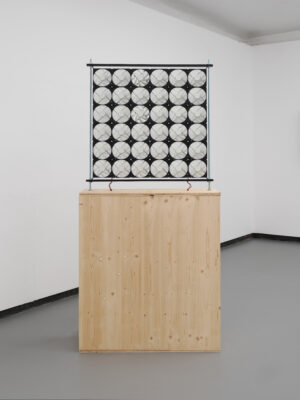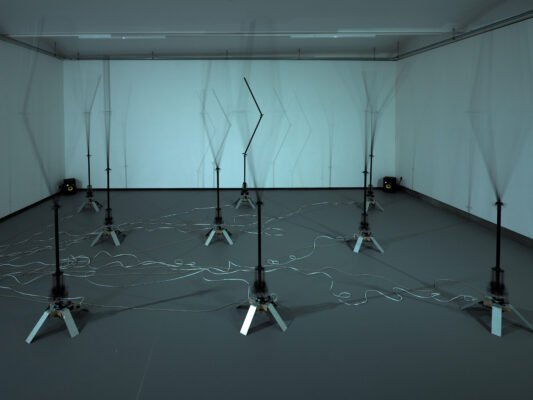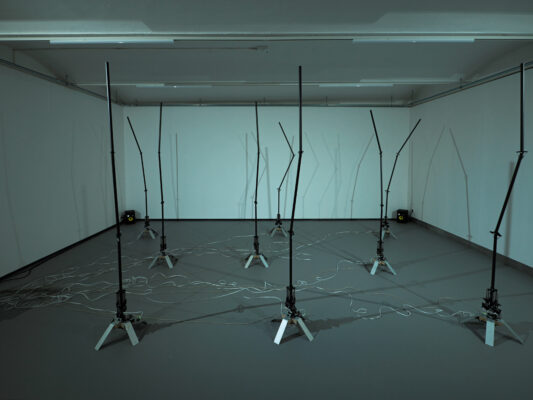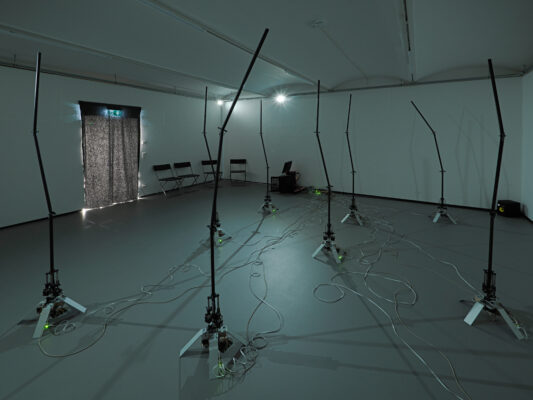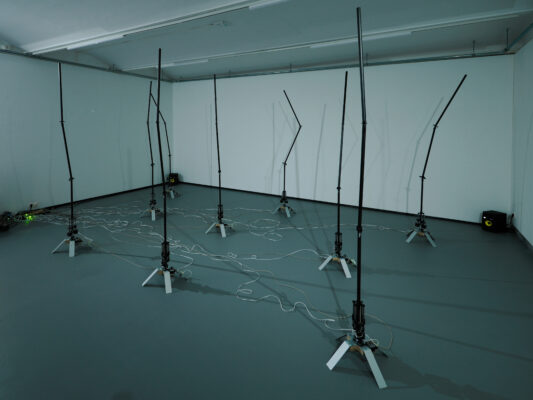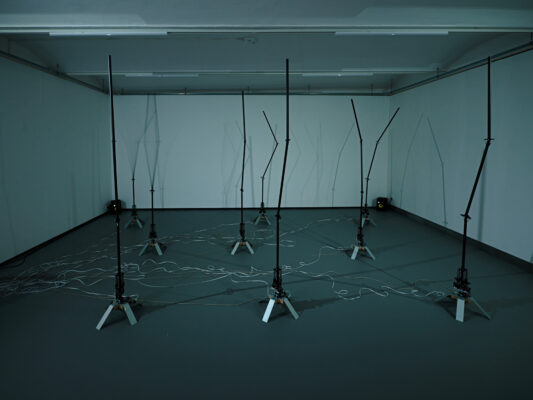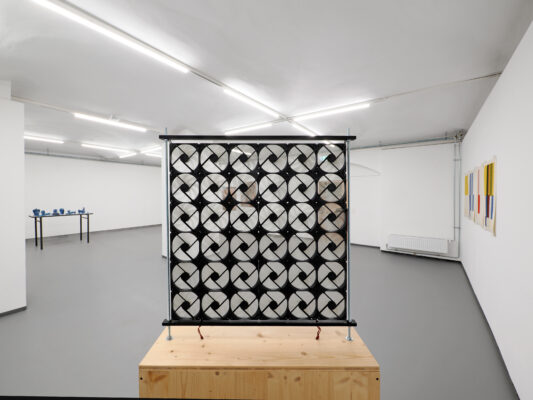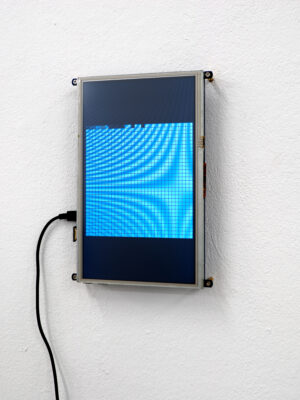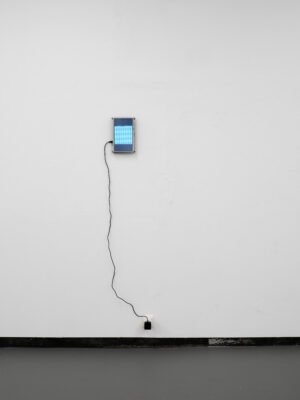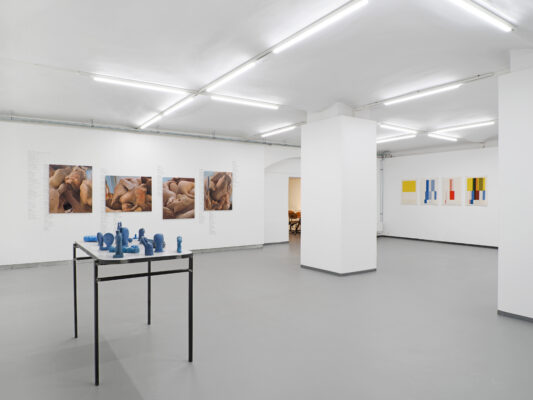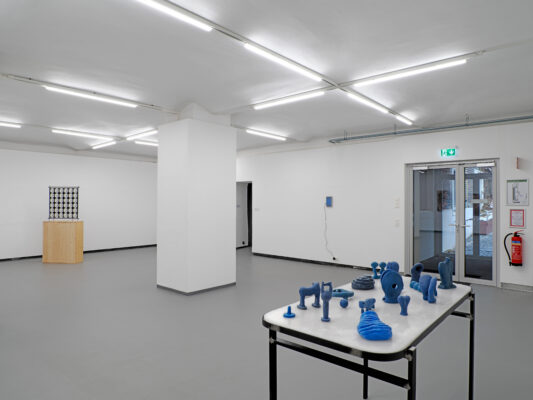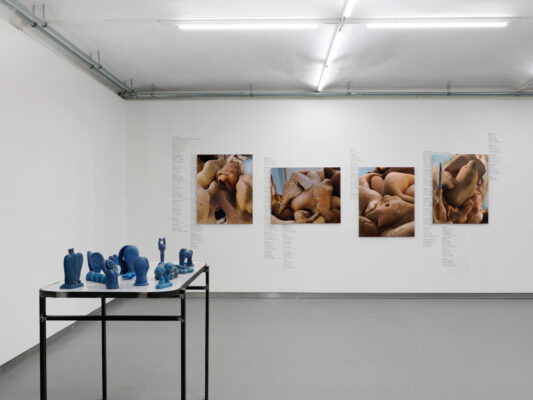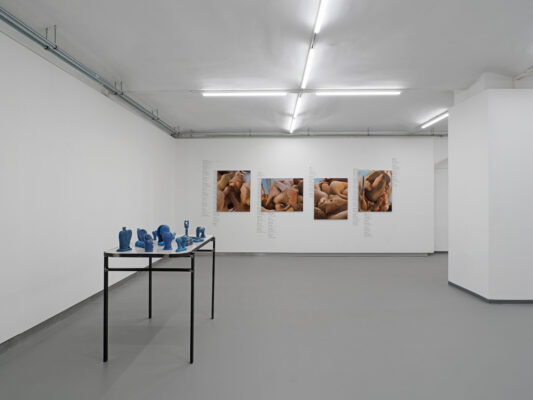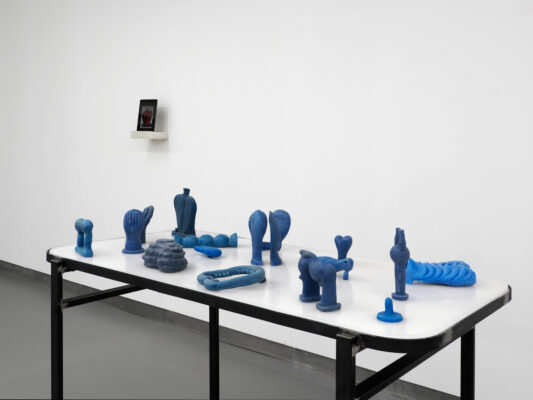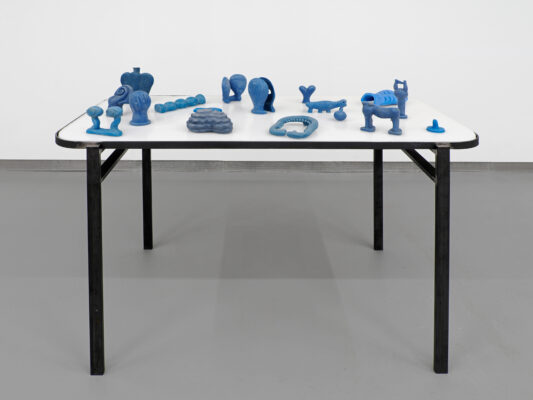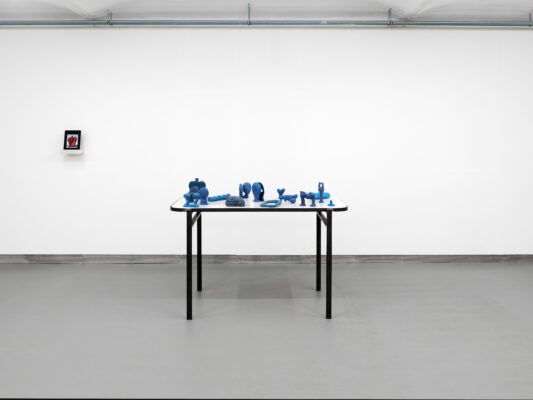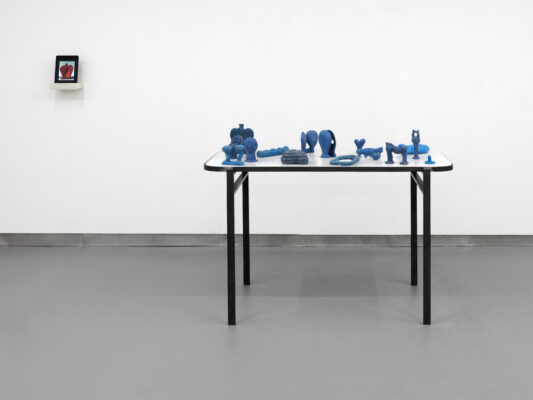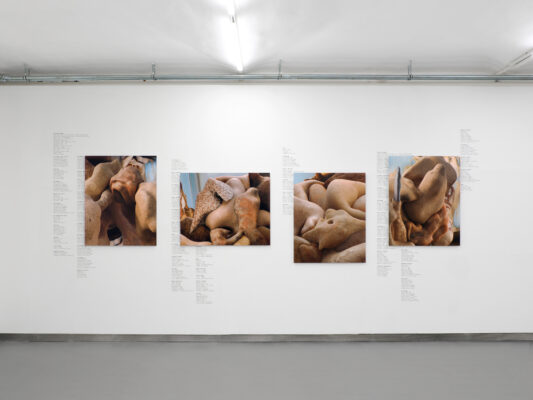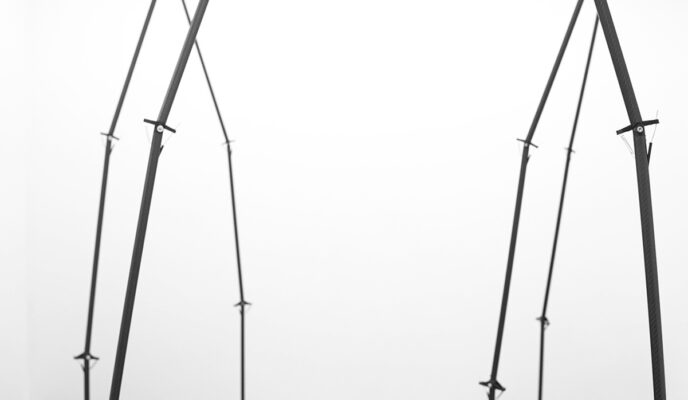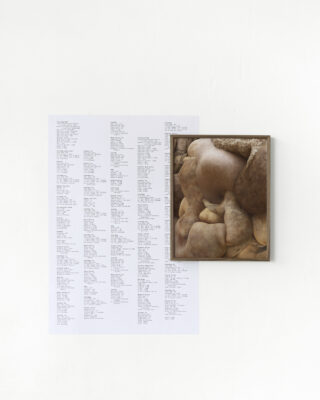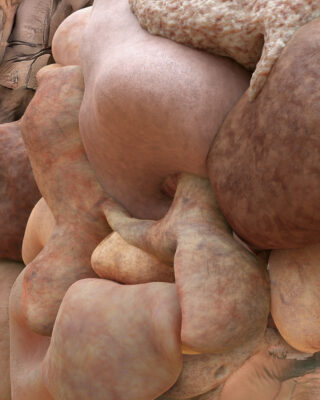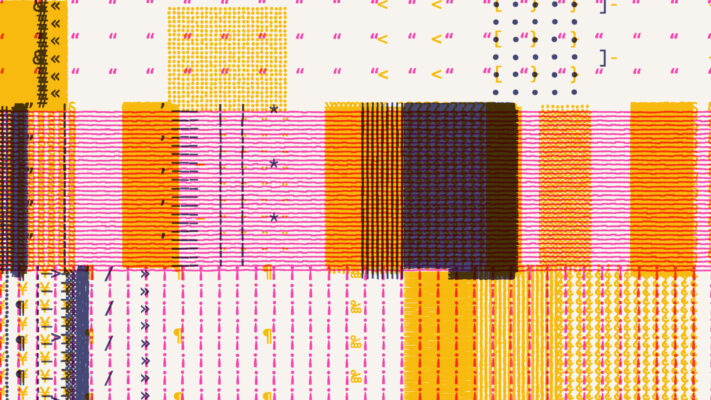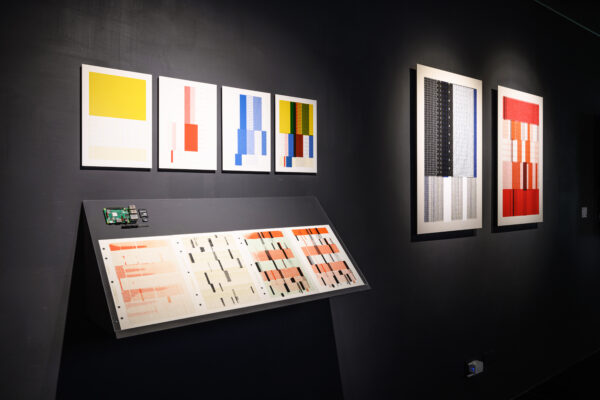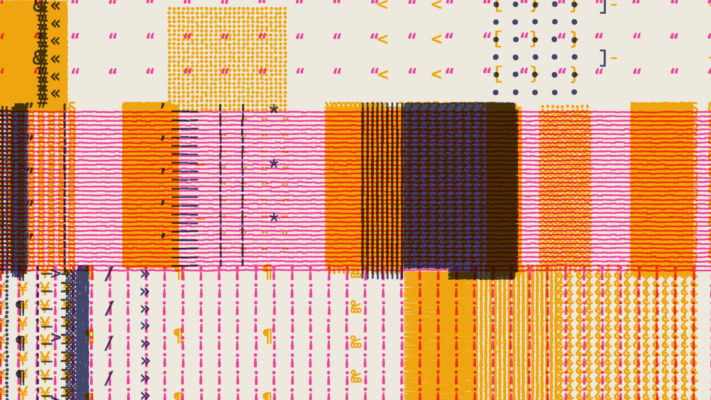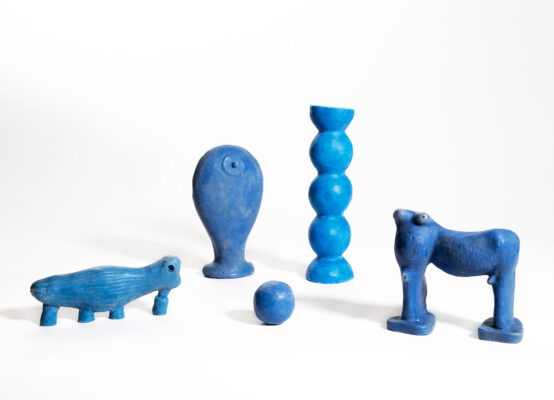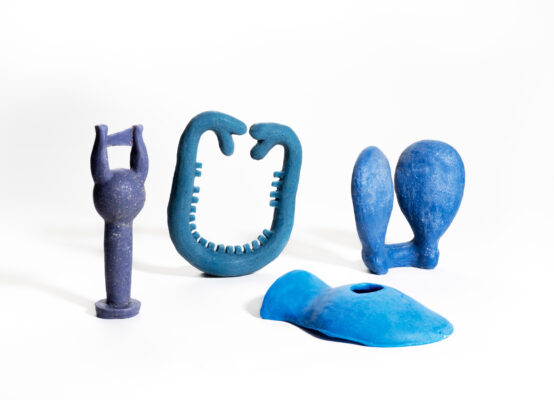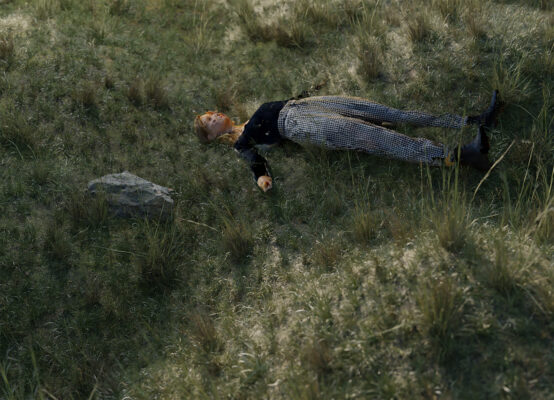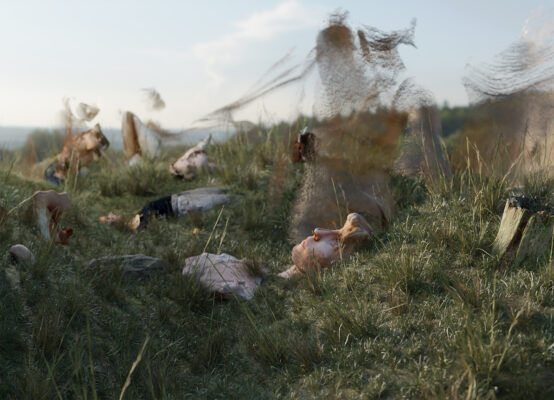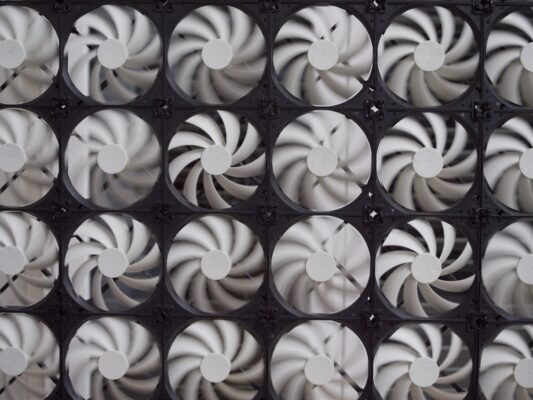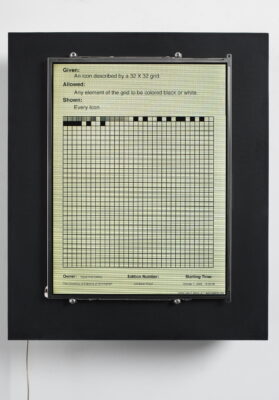Opening: Monday, 4 December 2023, 7 p.m.
Opening speech: Johan Nane Simonsen
Concert: Wednesday, 17 January 2024, 7 p.m.: Jung An Tagen (live)
With DIGITAL, the FOTOGALERIE WIEN is dedicating its latest focus series to a topic that is shaping our entire epoch. Speculation about workers spending a great portion of their waking life with their eyes glued to a monitor no longer belongs to the realm of fiction. The globe rotates beneath a net of satellites that continuously generate images of its surface. Almost all of us carry a computer in our trouser pockets, we are all under surveillance, measured and expressed in two numbers: zero and one. Digitalisation has had wide-ranging consequences for photography. Some have declared it dead. But contrarily photographic imaging processes have developed into an important principle of our digital life style. Photographs are produced and consumed in unprecedented numbers. Photographs on small, garish screens have become the interface of algorithms and our emotions, desires, fears and dreams. We dare to cast a gaze on this present and show, in three exhibitions centred on the DIGITAL, an overview of the technologies and the reactions of artists to them. Together with them we are attempting to get a sense of the intangible and to assess its potential and dangers.
The third chapter of our main focus series is entitled GENERATIVE. It is devoted to the creative power and the momentum of digital systems. Here, different rules apply: The continuum of physical reality is transferred into abstract information, into discrete values. The material becomes a text. A kind of parallel world emerges without ambivalence, without fluid transitions, without blurred boundaries. In this world, every process can be clearly defined and must follow absolute laws. According to definitive rules digital systems generate new data and use these as a basis for further calculations. In this way, they expand their own possibilities into the potentially infinite. It seems as if almost anything, any image, sound or text can be simulated by machines. In a sense, digital technologies have imitated “creation”: something has been created that can in turn create. The results of these processes are beyond the imagination and control of their creators. Perhaps we are fortunate that our machines are not designed to last, in accordance with the free-market system that created them.
(Johan Nane Simonsen)
Patrícia Chamrazová presents the video The Body a Poem. She is interested in the interaction of the human body with digital space and the conscious pushing of the boundaries of physical space into the digital. Exploring the somatic body in hybrid reality has become her theme. The contemporary “I” in cyberspace embraces the virtual world and transforms it into another manifestation of a body that exists simultaneously in both the physical and virtual worlds. A digital representation of us in a virtual environment, something that is sometimes so close to us that we can even touch it or feel it despite its immaterial nature.
FOLIO is a generative drawing system created by artist Matt DesLauriers. Underlying this work is a computer algorithm, coded in the programming language JavaScript, that produces an output process for a given input. Each output may be realized digitally, in print, or through another medium. The compositions, formed by recursively packing bins of data to fill the page, are constrained entirely by the use of typographic glyphs and a limited colour palette. By default, when no input is specified, the program will select a random integer. Each time this code executes, it produces a new and unique piece of art that – if not captured and recorded – will be forever lost. The audience can engage with the software.
Mateusz Dworczyk‘s practice is based on a postmodern concept of the body, which defines the body as a malleable entity and questions its position as a natural object. Using new possibilities of image production, the multimedia work Procedural Incarnation – video, pigment print, wall text – consciously refers to the interrelationship between technology, body and body image. Based on digital photographs of bodies, Dworczyk uses machine learning (AI) to create new body images: The faulty image result, from which a statement about a faulty perception of the world of a transclassical machine can be elicited, is at the same time the template for the three-dimensional body models. This creates a tension between different imaging processes, but also a play between the template and its artistic interpretation.
In the sculptural work /imāgō, Mira Klug combines the aspects of transcendence by using an image generator to create new images of votives from the image archive of historical votives. The algorithm of this AI image generator delivers (infinite) recombinations of these data she feeds in. These newly generated votive images thus draw on a symbolic language, but represent unreadable forms. Subsequently, the generated votive images were moulded from clay and cast in wax. The digitally generated image was thus transferred back into a physical form. These abstract and artificially generated forms, in which historical fears and hopes are inscribed, pose questions about a possible future and the promise of constant improvement through this applied methodology.
The Forest is the second installation in a series of works by Leo Peschta that deals with a dystopian simulation of the environment. Through a techno-symbolic simulation, this series attempts to confront the viewers with their connection to nature and the way they perceive it. Analog phenomena/appearances are recreated using motors, joints, computers, and algorithms that upon prolonged viewing and engagement with them, evoke deep sensory experiences/memories and, despite their technoid form, create an emotional connection between the visitor and the installation. It is deliberately not an attempt to simulate these phenomena 1:1. Rather, the simulation resembles a literary realization of these phenomena or an abstract painting that allows form to fade into the background in order to convey a mood.
The object Something in the Air by Christine Schörkhuber transforms the acoustic sound of human speech into the haptic experience of air movement. A digital recording of spoken text is applied to the power control circuit of fans and thereby generates wind out of words. Through the sound of the rotating engines and the flowing air, recorded phonemes can be perceived as whispering schemes even without loudspeakers. Thus they refer to the nature of articulated speech in a physical sense.
Every Icon is a software written by John F. Simon, Jr. because he wanted to discover images he couldn’t imagine. Starting at an image where every grid element is white, the software displays combinations of black and white elements, proceeding toward an image where every element is black. In contrast to presenting a single image as an intentional sign, Every Icon presents all possibilities. While Every Icon is resolved conceptually, it is unresolvable in practice. The theoretical possibilities outdistance the time scales of physics and imagination. Every Icon is a dynamic image where software links extraordinary duration to momentary sensation. Ultimately, however, only people can decide which images are beautiful and interesting.
Petra Noll-Hammerstiel and Johan Nane Simonsen, for the collective
